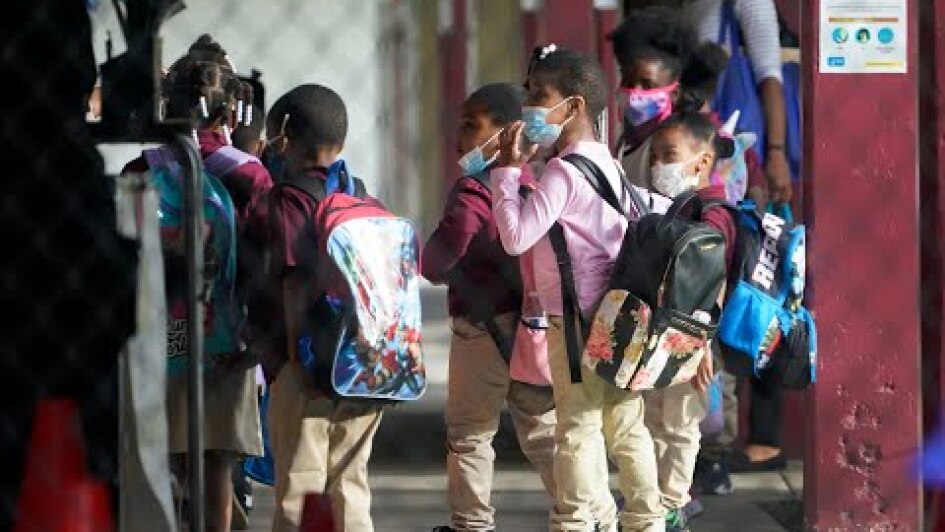The Centers for Disease Control and Prevention released new guidance for schools last week, detailing the precautions they should take to conduct in-person learning during the COVID-19 pandemic.
Amid ongoing debates around the country about how to keep students and educators safe, the guidance is part of the Biden administration’s efforts to bring a new tone to the federal response.
The big takeaway: Most schools are in communities with high rates of the virus. Under the new recommendations, they would not be able to bring all of their students back to campuses full-time.
Here are a few key details.
What did the CDC tell schools?
It’s ultimately up to local school districts, working under state directives, to determine when and how to reopen. And we’ve seen widely varying approaches across the country.
The new CDC guidance seeks to inform those decisions, building on research that suggests some closed schools may be able to reopen if they take careful precautions. It uses rates of COVID-19 in a community as the basis for four, color-coded risk levels, matching those metrics with recommendations. In the highest risk areas, middle and high schools may need to remain closed unless they can take careful precautions, like using routine testing to determine if their efforts to slow the spread are working.
When she announced the guidance, CDC director Rochelle Walensky said 90 percent of U.S. counties fall into that high-risk zone. And, as more contagious variants of the virus spread, she left the door open for revising the recommendations in the future.
How is this different from previous guidance?
Under the Trump administration, the CDC released guidance in many areas, but some school leaders and education groups said those documents were confusing to read and, at times contradictory.
The new guidance is updated with the latest science, the CDC says. It includes some of the same recommendations, but is more direct about how schools should put them into place.
For example, it says face masks should be required, rather than encouraged. And, unless schools are in low-risk areas, which few are, it says six feet of social distancing is a must. It also says schools should group students in cohorts to reduce interactions throughout the building, making it easier to trace and isolate people who’ve been exposed to the virus.
What does the guidance say about vaccines?
The CDC says states should prioritize teachers and school employees for vaccines, as a separate federal panel has called for, and many states have already done so. But it also says schools can reopen with appropriate precautions, even before all teachers vaccinated.
Will this help reopen schools?
Some education groups hoped that clearer metrics would lend credibility to the recommendations, helping schools chart a course through tense debates over reopening and student safety.
Many of those groups, including teachers unions and associations representing school administrators, praised the new guidance for being clear and concise. But some, including some public health experts, said the administration set too high a bar for full reopening. Some who’ve resisted school reopenings also said the guidance doesn’t do enough to address factors like school ventilation.
President Joe Biden has called Congress to pass a relief bill that includes an additional $130 billion in aid for schools to help deal with the crisis. Meanwhile, debates about how schools should respond to the pandemic are likely to continue.
And state leaders in many areas have taken steps on their own to encourage them to reopen and stay open, including pushing legislation to require in-person instruction.






